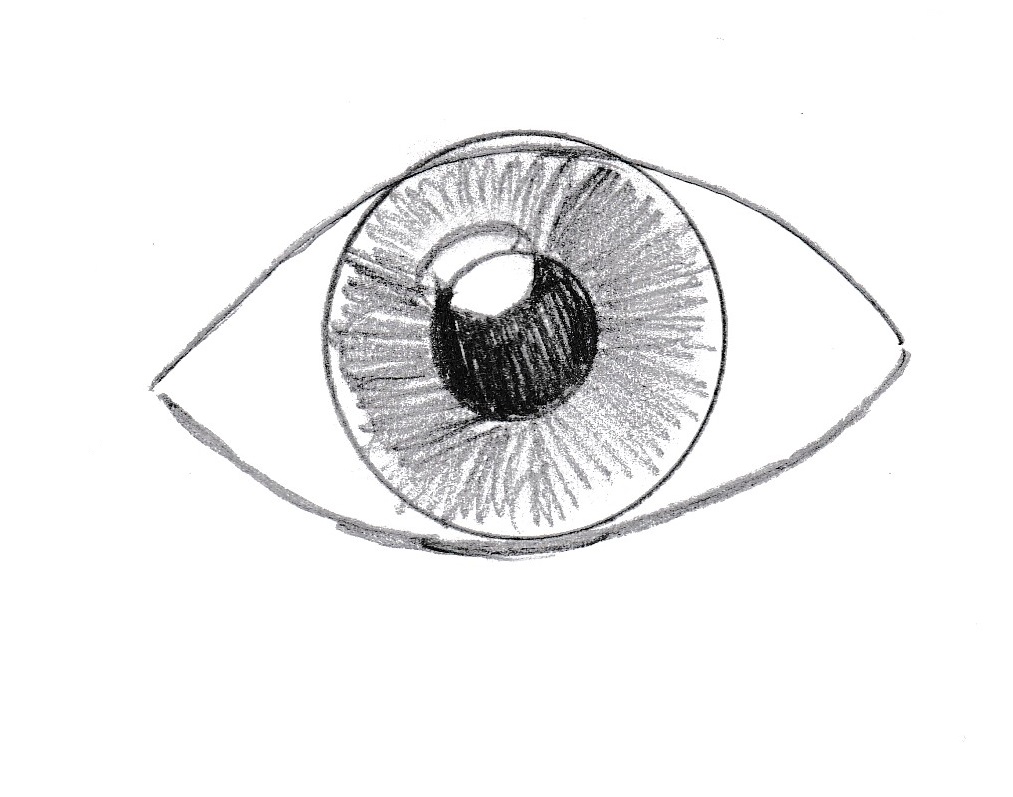

Do not forget to keep your highlights in your iris and pupil white. Continue until your iris is evenly light gray.

I always color with my stumper by making circular movements. To make sure that your stumper does not leave any nasty stains, I first wipe off the first layer of graphite that is still on, on a loose sheet of paper. So actually you fill in the iris with the graphite that is still on your stumper (mine are always dirty). Personally, I achieve the softest colored result using a stumper. Later on you can draw over dark areas and erase light details. It is therefore important to have gray as your basic tone. Both dark and light shades are close together. Darkening the pupil Step 3: Shaping the iris The iris is an area with a lot of depth and details. I use 2B myself but as long as you work softly and in layers you can also use up to a 6B pencil. The coloring of the pupil can be done with a softer pencil. If these remain white you will eventually get a much nicer contrast and a shiny effect. It is important that you do not fill in the reflections with pigment already. Color the iris, wipe the pigment with a stumper and color another layer over it. You get the best result by working in layers.

I always work from the inside out because you can apply corrections even better if necessary (especially the proportions). Outline of eye and eyebrow Step 2: Coloring the pupil If you are satisfied with your sketch, you can start to colorize after erasing unnecessary lines. For the sketch it is useful to use an HB-2B pencil so that you do not make the lines too dark, as you also do not want the sketch to be visible in the end. Often you can see some eyelash hairs as a shadow that block the light. The highlights in the eye are usually a reflection of light from the environment (such as a window). Ask yourself: ‘Which lines are important and will I use during the process of coloring?’ It is mainly about the base: the eyelid, the tear duct, the pupil, the iris, the eyebrow shape and the highlights. Try to trace your reference picture as a kind of coloring picture for yourself. It is therefore important that you have the basis sketch on paper first. Step 1: The alignment and shape of the eye and the eyebrow A drawing actually consists of two parts: sketching and coloring. We divide the process of drawing an eye into four parts: On thick paper you can build more layers, and with a mechanical pencil and a pencil eraser you can work much more detailed because of their thin points. Especially thick paper, a mechanical pencil and a gum pencil will give a lot of improvement in your drawings. I definitely recommend using similar materials. These are the materials that I use for every black and white portrait. Blending products: stumpers, cotton swabs and tissuesĮven though there are many art materials available, after more than 10 years of drawing, I found out that the materials listed above work the best for me.Erasing: Faber Castell pencil eraser and Tombow mono eraser.Mechanical pencils: HB 0.7 mm, 1B 0.3 mm and 2B 0.5 mm.The photo is quiet, front-sided, fairly sharp and without too much make-up.įor this tutorial I used the following materials: For this tutorial I used the following reference photo: The reference photo They are not called ‘mirror of the soul’ for nothing. You can also see this blog as an addition to Annelies’ article, namely: how do I start drawing portraits? In this article, we focus on what really makes a face expressive: the eyes.
EYE SKETCH COLOR HOW TO
How to draw an eye? For this blog post I thought it would be nice to go back to the basics of portrait drawings: the eyes.


 0 kommentar(er)
0 kommentar(er)
